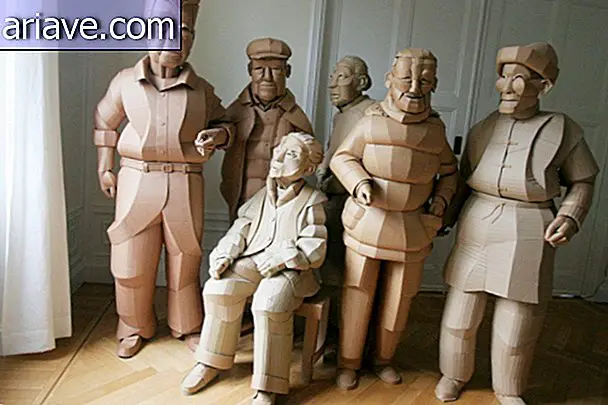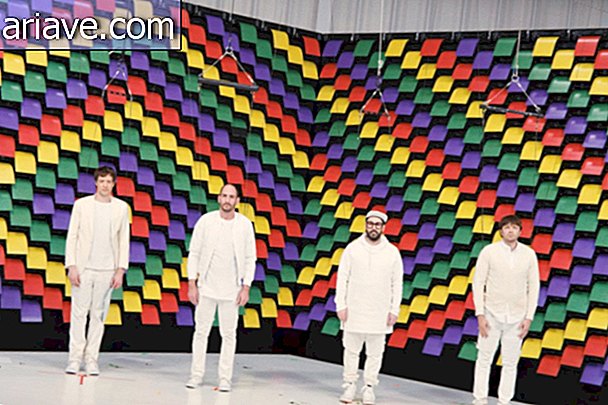Levi's and its almost 160 year history

When it comes to jeans, there is no way not to think about Levi's. The brand, which is about to turn 160 in 2013, has an incredible story of the widespread use of denim throughout pieces that have become fashionable icons.
Headquartered in San Francisco, United States, Levi Strauss & Co (Trademark) is the world's largest manufacturer of jeans. Today, the company also produces bespoke trousers, jackets, jackets, shirts, skirts, bags and belts, and a plethora of items that carry on its tradition and pioneering in the fashion universe.
How it all began
The company started with the ideas of Levi Strauss (Loeb originally, later changed his name to Levi, as he was called in the family and by American clients), an immigrant from Germany who arrived in the United States in 1847 in New York City, starting a working life with his older brothers, Louis and Jonas, selling haberdashery artifacts like fabrics, buttons, threads and scissors.
In January 1853, the California Gold Rush was in full swing and it was there that Levi set out in search of trade opportunities, completing the start of his journey in the city of San Francisco in partnership with his brother-in-law David Sten and his sister. Fanny That was when Levi Strauss & Company came into being.

Strauss's company also sold canvas tent covers and wagons. Once, when trying to sell these products to prospectors, Levi received in response from the workers that he should sell trousers that resist better to heavy duty.
With the idea launched, Strauss hired a tailor to make canvas clothes, which were well accepted by the prospectors, as well as being successful among cowboys, farmers and railway officials. However, over time, consumers came to say that the fabric was very stiff and uncomfortable, and still complained that the color was dirty and opaque.
In response to requests from his customers, Strauss went looking for a fabric that was also very durable, but which offered more comfort and flexibility. Thus, it was in 1860 that he replaced the rigid tarp with the “serge de Nimes” (fabric that originated in the French city of Nimes), which was renamed “denim”.

But Strauss was still not satisfied and decided that the pants needed some color. He then dyed the pieces with the dye of a plant called Indigus, which provided a bluish hue. Strauss also added pockets for workers to carry tools and gold nuggets. And so came the blue jeans we know to this day.
The word jeans originated from the nickname given to Genoese sailors, who were the first to use French denim (still colorless). They were nicknamed "genes" and the word was transformed by Americans by "jeans".
In 1873, Levi Strauss & Company began using the design of pocket trousers and patented along with tailor David Jacobs the process of placing copper rivets (studs) to reinforce the pieces. Then, on May 20, 1873, they received the patent certificate and that date is considered the official anniversary of "jeans".
A history of innovations

In the 1930s there was an economic depression in the United States that hurt the company's business. Around the same time, the company adopted the cowboy as a poster boy, associating the tough and brave stereotype with the famous waist overalls 501 (the first model of pants with copper rivets).

During World War II, the design of jeans was modified due to governmental determinations regarding the economy and conservation of material. The rivets and trousers were removed to save fabric and metal. As well as the arched pocket stitching designs were also removed, decorative design would not be essential in wartime.
After the war, the company's most spectacular growth came after 1946, when the company decided to abandon wholesale production and focus on manufacturing clothing under its own brand. And then there was an explosion in sales, and demand for products soared.

In the 1950s, jeans became popular around the world, as well as being a strong mark of youth and rebellion in films such as James Dean's. And came the 1960s and hippie era, Marilyn Monroe, and the Woodstock festival, which further helped to make jeans fashionable as a symbol of freedom, sensuality and protest.
The brand went through the 70s, following the modeling and novelties of the time, such as bell-bottom pants that were added to its collections. The 1980s came with the inauguration of the brand's first flagship store in Europe. But this time also brought some problems for the company, which had to close some factories because of increased competition and financial difficulties.

From the 90's the brand began to rise and regain the prestige. In 1996, the Vintage Clothing Levi line was launched: a collection of reproductions of antique pieces from the Levi Strauss archives.
At the turn of the millennium, the stores gained a revitalization, which was definitive to mark Levi's new phase, with a more stylish and modern look in every branch in the world, including Brazil, which was the second country to open a Global Store in 2009 with the new standard set by the brand.

And then Levi's continues to this day with groundbreaking releases and incredible models in several pieces. In addition to clothing, the brand has also launched novelties such as mobile phones (manufactured by Modelabs), a collection of handcrafted shoes with leftover jeans and even a line that fades according to your movements.
Collections of female-shaped jeans (Curve ID), jeans with organic cotton and the model that comes with an iPod port are some of the revolutionary creations of the brand, which uses high technology to produce its lines, launches fashion. and will always be the world's leading jeanswear icon. Check out the videos below for some more details of this success story:











